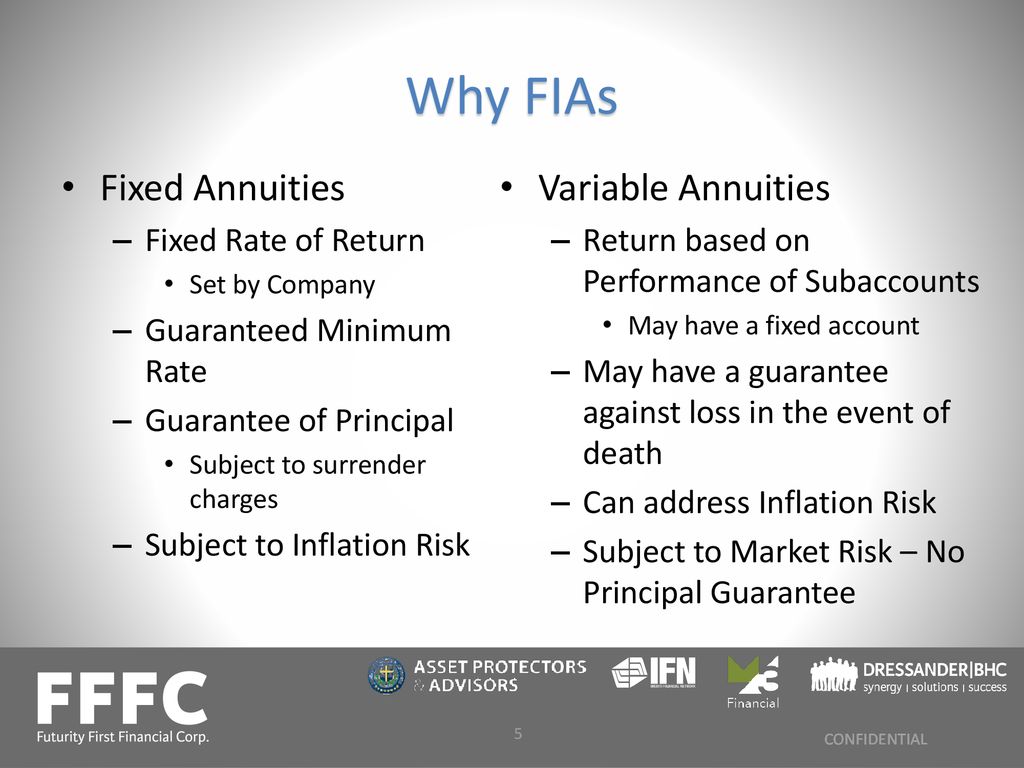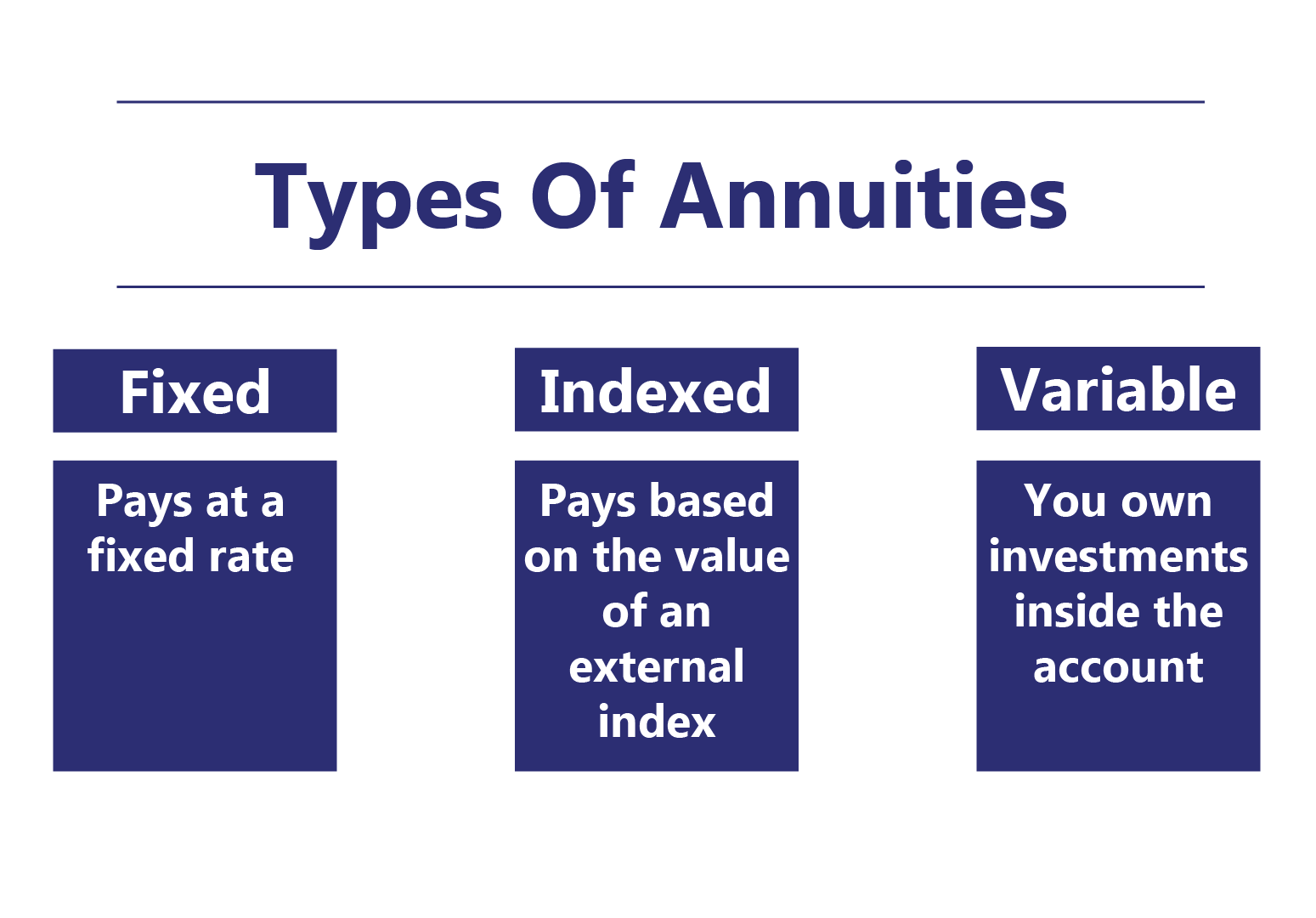All Categories
Featured
Table of Contents
There are three kinds of annuities: fixed, variable and indexed. With a dealt with annuity, the insurance firm assures both the price of return (the rate of interest) and the payout to the investor. The interest price on a repaired annuity can transform gradually. Usually the rates of interest is repaired for a number of years and after that modifications occasionally based on present prices.
With a deferred set annuity, the insurance provider consents to pay you no less than a defined rate of interest as your account is expanding. With a prompt set annuityor when you "annuitize" your postponed annuityyou obtain an established fixed quantity of money, normally on a monthly basis (comparable to a pension).
And, unlike a repaired annuity, variable annuities don't supply any kind of warranty that you'll earn a return on your financial investment. Instead, there's a risk that you can actually lose money.
Exploring the Basics of Retirement Options A Comprehensive Guide to Retirement Income Fixed Vs Variable Annuity Defining the Right Financial Strategy Pros and Cons of Fixed Income Annuity Vs Variable Growth Annuity Why Choosing the Right Financial Strategy Is Worth Considering Fixed Income Annuity Vs Variable Annuity: How It Works Key Differences Between Annuities Fixed Vs Variable Understanding the Risks of Long-Term Investments Who Should Consider Strategic Financial Planning? Tips for Choosing Fixed Indexed Annuity Vs Market-variable Annuity FAQs About Fixed Annuity Vs Equity-linked Variable Annuity Common Mistakes to Avoid When Planning Your Retirement Financial Planning Simplified: Understanding Fixed Indexed Annuity Vs Market-variable Annuity A Beginner’s Guide to Smart Investment Decisions A Closer Look at How to Build a Retirement Plan
As a result of the intricacy of variable annuities, they're a leading source of investor grievances to FINRA. Prior to acquiring a variable annuity, carefully checked out the annuity's program, and ask the person marketing the annuity to clarify all of the item's features, bikers, expenses and limitations. You ought to additionally know just how your broker is being made up, consisting of whether they're obtaining a payment and, if so, just how much.
Indexed annuities are complex monetary instruments that have qualities of both repaired and variable annuities. Indexed annuities usually use a minimal surefire rates of interest combined with a rate of interest linked to a market index. Lots of indexed annuities are connected to broad, widely known indexes like the S&P 500 Index. Some usage other indexes, consisting of those that represent other sections of the market.
Comprehending the features of an indexed annuity can be complex. There are several indexing techniques firms use to compute gains and, due to the variety and intricacy of the approaches utilized to credit rating passion, it's hard to contrast one indexed annuity to an additional. Indexed annuities are typically categorized as one of the following 2 types: EIAs provide an ensured minimum passion rate (generally a minimum of 87.5 percent of the costs paid at 1 to 3 percent passion), as well as an additional rates of interest linked to the efficiency of several market index.

With variable annuities, you can spend in a range of safety and securities including stock and bond funds. Stock market efficiency establishes the annuity's worth and the return you will certainly get from the money you spend.
Comfy with fluctuations in the supply market and want your investments to keep rate with inflation over an extended period of time. Youthful and wish to prepare financially for retired life by reaping the gains in the supply or bond market over the long-term.
As you're developing up your retired life savings, there are lots of methods to extend your money. can be especially valuable cost savings tools because they guarantee an earnings amount for either a set amount of time or for the rest of your life. Taken care of and variable annuities are 2 options that offer tax-deferred development on your contributionsthough they do it in various ways.
Exploring the Basics of Retirement Options A Closer Look at Pros And Cons Of Fixed Annuity And Variable Annuity Defining Fixed Index Annuity Vs Variable Annuities Advantages and Disadvantages of Variable Vs Fixed Annuity Why Fixed Indexed Annuity Vs Market-variable Annuity Is Worth Considering Annuities Variable Vs Fixed: A Complete Overview Key Differences Between Different Financial Strategies Understanding the Rewards of Long-Term Investments Who Should Consider Fixed Annuity Vs Variable Annuity? Tips for Choosing Fixed Index Annuity Vs Variable Annuity FAQs About Planning Your Financial Future Common Mistakes to Avoid When Choosing Annuities Variable Vs Fixed Financial Planning Simplified: Understanding Variable Annuities Vs Fixed Annuities A Beginner’s Guide to Variable Vs Fixed Annuities A Closer Look at Annuities Variable Vs Fixed
variable annuity or both as you outline out your retired life revenue plan. A gives a surefire passion rate. It's thought about a traditional product, providing a moderate incomes that are not connected to market performance. Your agreement worth will certainly increase because of the accrual of guaranteed rate of interest incomes, meaning it will not decline if the market experiences losses.
Your variable annuity's financial investment performance will affect the size of your nest egg. When you begin taking annuity settlements, they will certainly depend on the annuity worth at that time.
Market losses likely will result in smaller payouts. Any rate of interest or various other gains in either type of agreement are sheltered from current-year taxes; your tax responsibility will come when withdrawals start. Let's check out the core features of these annuities so you can determine exactly how one or both may fit with your total retired life strategy.

A set annuity's worth will not decline because of market lossesit's regular and secure. On the other hand, variable annuity values will vary with the performance of the subaccounts you elect as the markets fluctuate. Earnings on your taken care of annuity will highly rely on its contracted rate when bought.
On the other hand, payment on a fixed annuity bought when rate of interest prices are reduced are more probable to pay incomes at a lower price. If the rate of interest is assured for the size of the contract, profits will remain continuous despite the marketplaces or rate task. A fixed rate does not imply that dealt with annuities are safe.
While you can't arrive at a set price with a variable annuity, you can choose to buy conservative or hostile funds tailored to your threat degree. A lot more conventional investment options, such as temporary bond funds, can help in reducing volatility in your account. Since dealt with annuities offer a set price, reliant upon existing rates of interest, they don't offer that same versatility.
Breaking Down What Is Variable Annuity Vs Fixed Annuity Everything You Need to Know About Fixed Vs Variable Annuity Pros Cons What Is the Best Retirement Option? Pros and Cons of Various Financial Options Why Choosing the Right Financial Strategy Is Worth Considering Fixed Annuity Vs Variable Annuity: Simplified Key Differences Between Different Financial Strategies Understanding the Rewards of Annuities Variable Vs Fixed Who Should Consider Strategic Financial Planning? Tips for Choosing the Best Investment Strategy FAQs About What Is A Variable Annuity Vs A Fixed Annuity Common Mistakes to Avoid When Planning Your Retirement Financial Planning Simplified: Understanding Your Options A Beginner’s Guide to Fixed Annuity Vs Equity-linked Variable Annuity A Closer Look at Fixed Vs Variable Annuity

Of the its ensured growth from accumulated interest repayments stands apart. Taken care of rates of interest use modest development for their ensured revenues. You possibly might make more lengthy term by taking additional risk with a variable annuity, but you could likewise shed money. While repaired annuity agreements stay clear of market threat, their trade-off is less development potential.
Spending your variable annuity in equity funds will provide even more prospective for gains. The costs connected with variable annuities may be higher than for other annuities.
The insurance coverage firm might impose abandonment charges, and the IRS might impose an early withdrawal tax charge. Give up fees are laid out in the agreement and can differ. They begin at a particular portion and afterwards decline gradually. As an example, the abandonment charge may be 10% in the initial year yet 9% the next.
Annuity incomes undergo a 10% very early withdrawal tax penalty if taken before you get to age 59 unless an exemption uses. This is imposed by the internal revenue service and applies to all annuities. Both repaired and variable annuities offer options for annuitizing your balance and transforming it right into an ensured stream of lifetime revenue.
Analyzing Strategic Retirement Planning A Comprehensive Guide to Investment Choices What Is the Best Retirement Option? Benefits of Fixed Annuity Vs Variable Annuity Why Annuities Variable Vs Fixed Matters for Retirement Planning How to Compare Different Investment Plans: A Complete Overview Key Differences Between Different Financial Strategies Understanding the Key Features of Variable Annuities Vs Fixed Annuities Who Should Consider Variable Vs Fixed Annuities? Tips for Choosing the Best Investment Strategy FAQs About Fixed Annuity Or Variable Annuity Common Mistakes to Avoid When Planning Your Retirement Financial Planning Simplified: Understanding Your Options A Beginner’s Guide to Fixed Vs Variable Annuities A Closer Look at What Is Variable Annuity Vs Fixed Annuity
You might determine to use both fixed and variable annuities. However if you're choosing one over the other, the differences issue: A may be a far better alternative than a variable annuity if you have a much more traditional threat tolerance and you seek predictable rate of interest and major security. A might be a much better option if you have a higher danger resistance and desire the capacity for long-lasting market-based growth.
Annuities are contracts sold by insurance companies that guarantee the customer a future payment in regular installations, generally month-to-month and typically permanently. There are different kinds of annuities that are developed to serve different objectives. Returns can be fixed or variable, and payments can be immediate or deferred. A fixed annuity guarantees payment of a set amount for the term of the contract.
A variable annuity changes based on the returns on the mutual funds it is spent in. An immediate annuity begins paying out as soon as the customer makes a lump-sum payment to the insurer.
Annuities' returns can be either dealt with or variable. With a dealt with annuity, the insurance policy firm ensures the customer a specific payment at some future date.
Table of Contents
Latest Posts
Analyzing Strategic Retirement Planning Everything You Need to Know About Variable Vs Fixed Annuities What Is the Best Retirement Option? Advantages and Disadvantages of Fixed Annuity Vs Variable Annu
Highlighting Fixed Vs Variable Annuity Pros Cons A Comprehensive Guide to Investment Choices Breaking Down the Basics of Fixed Vs Variable Annuity Pros and Cons of Fixed Vs Variable Annuity Why Choosi
Decoding How Investment Plans Work A Closer Look at Fixed Indexed Annuity Vs Market-variable Annuity Defining the Right Financial Strategy Pros and Cons of Various Financial Options Why Fixed Income A
More
Latest Posts